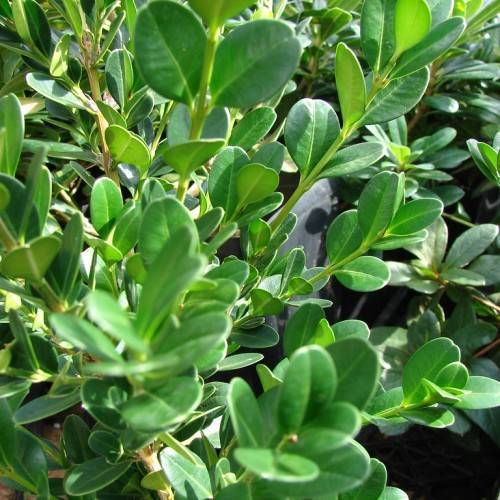
Japanese boxwood
Buxus microphylla var. japonica 'Winter Gem'
Also Known As - Korean boxwoodCycle:
Perennial
Watering:
Average
Hardiness Zone:
6 - 9
Flowers:
Flowers In Spring
Sun:
Filtered shade, Full sun only if soil kept moist, Part sun/part shade
Soil:
Well-drained
Fruits:
Fruits In Summer Ready In Winter
Leaf:
Yes
Growth Rate:
High
Maintenance:
Moderate
Care Level:
Moderate
watering
For optimal health, Japanese boxwood should be watered once each week or whenever the top 1-2 inches of soil feels dry to the touch. Make sure to water at the base of the plant to keep the leaves dry. Be sure not to over water, however, as this can lead to root rot. Japanese boxwood should never be allowed to sit in standing water or excessively wet conditions. At the same time, be careful not to underwater, as this can lead to leaves to yellow and drop.
sunlight
Japanese boxwood (Buxus microphylla var. japonica 'Winter Gem') prefers full sun, which means at least 6 hours of sunlight a day. This variety of boxwood also tolerates light shade, so it would do well in a spot that gets some shade during the heat of the afternoon. For best growth, Japanese boxwood should be planted in an area with a balanced amount of sunlight throughout the day and not in an area that is exposed to full sun all day long.
pruning
Japanese boxwood should be pruned twice a year: once in late spring and once again in early summer. Pruning in early summer is to remove any dead, damaged, or diseased branches, and to keep its mineral shape. Late spring pruning should be done to reduce the size and shape of the shrub if desired. Be sure to use sharp, clean pruning shears and leave no stubs of the branches. Prune each branch so the shape of the topiary can be discerned. Remove no more than 1/3 of the foliage in 1 pruning session. After pruning, use a fertilizer to help the plant recover and thrive.
